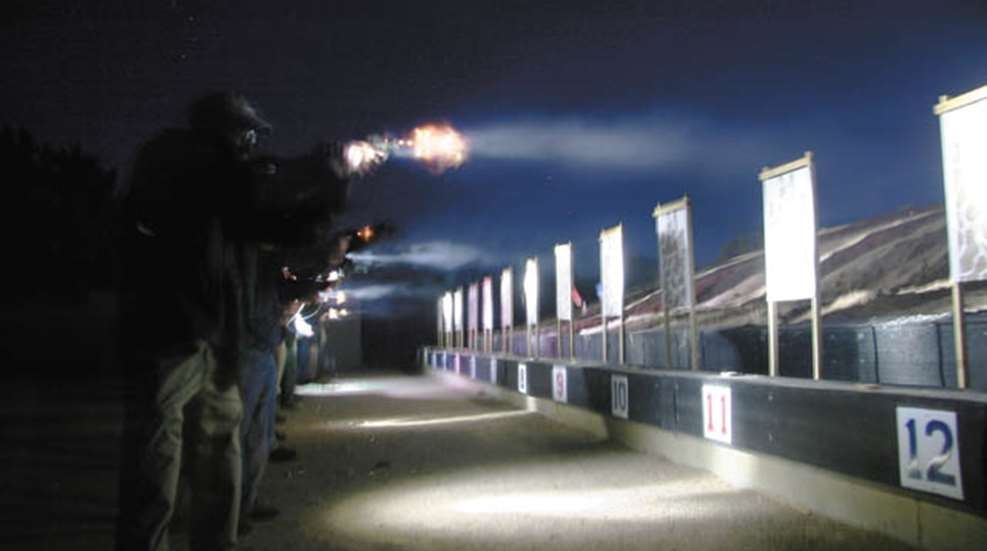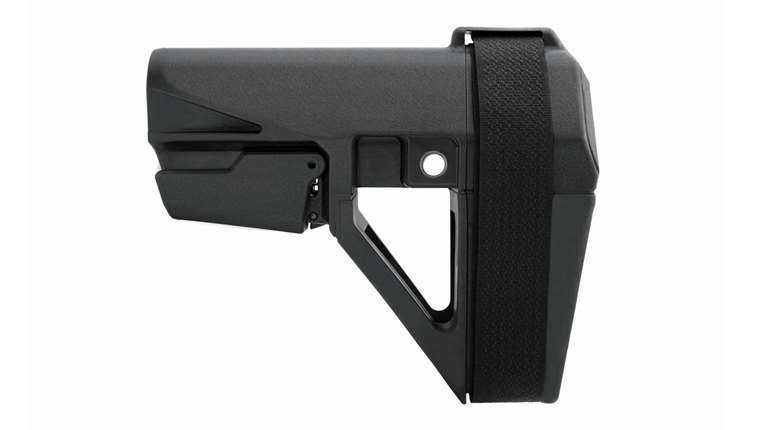
A veteran firearms instructor once opined that American shooters, "like to talk .45s, shoot 9 mm and carry .38s." Compact revolvers and small semi-automatic pistols are carried for convenience, not power. They are emergency gear, much like a first-aid kit or fire extinguisher. A firefighter wouldn't take a 2-pound extinguisher to a house fire. Similarly, you don't carry a five-shot revolver and deliberately hunt for the enemy. However, everyone agrees carrying the pocket gun is better than carrying no gun at all.
We'll call the small, easy-to-conceal handguns "pocket guns" for the sake of discussion. Pocket guns are generally carried a lot and shot a little. Full-sized pistols or revolvers have large grip areas and ample weight to absorb the felt recoil of most standard handgun cartridges. This makes them enjoyable to shoot. Conversely, pocket pistols have small grips and weigh little, making them less comfortable to actually fire.
The Conundrum
A short sight radius, compact grips and minimal mass all combine to make pocket pistols some of the most difficult handguns to shoot accurately. Despite this fact, most gun owners will purchase a pocket pistol, fire a few rounds through it and then go about carrying it as a personal-defense tool. Even more interestingly, they will buy these guns and give them to shooters with very little training or experience (wives, daughters, girlfriends, parents, etc.) and suggest they use them for protection.
If we are to be honest with ourselves, we need to ask whether we have genuine or false confidence in our choice of equipment and training. Fighting for your life generates the highest level of physical and emotional stress you can ever experience. It's a rather important consideration. Are we prepared to defend our lives with a pocket pistol that is difficult to shoot well and one with which we hardly ever practice?
Pocket Pistols and Pen Lights
David Biggers, marketing vice president for XS Sight Systems, had all of those issues in mind when he came up with the idea for a special training event at the Gunsite Academy. Its official title was "Pocket Pistols and Pen Lights."
The concept was very simple; use the compact handguns folks actually carry on a daily basis for personal defense, and run through a number of basic and advanced training scenarios. This project quickly took on a life of its own. SureFire, Ruger and Smith & Wesson were soon on board as co-sponsors. Other companies providing material support included Galco, 5.11 Tactical and Wilderness Tactical Products. All of the manufacturers were a natural fit, as they make products perfect for concealed-carry and personal-defense applications.
As for hardware, the primary arms would be the LCR (.38 Spl.) and LCP (.380 ACP) from Ruger and a variety of Smith & Wesson J-frame models chambered in .38 Spl. Defensive and training ammunition in both calibers came primarily from Hornady, with a few boxes from Federal and PMC.
Crawl, Walk, Run
We started our weekend training event with the basics from distances of 3, 5 and 7 yards, and engaged the hallmark Gunsite camouflage silhouettes. Using the revolvers, shooters practiced reloading with both HKS Speedloaders and Bianchi Speed Strips. Like most comparisons, the circular speed loader versus the speed strip is a tradeoff. Speed loaders are faster, but don't carry as well in a pants or shorts pocket. Conversely, speed strips require more time to load, but conceal well in most any pocket.
As far as accuracy is concerned, like most handguns, a pocket pistol's accuracy is not so much an issue of hardware as it is the hand that holds it. Veteran cops Dave Spaulding and Rich Grassi shot the compact revolvers like human Ransom rests, each meticulously chewing a large ragged hole in the cardboard targets. Bo Wallace, gunsmith extraordinaire for XS Sights, was able to ring the steel popper target with an LCP at 50 yards with regularity.
The compact flashlight we used during the evening practice was the SureFire E1B, better known as the "Backup." Like the pocket pistol, the E1B would not be my first choice if I were to go hunting for bad men in the dark, but it carries so well, it has become my personal always-carry light. As a result, I call it the J-frame of flashlights.SureFire Academy's Lead Instructor Bill Murphy ran us through several drills with our pocket pistols and compact light. The E1B is a dual-output LED model that produces 80 lumens of light. That's more than your old D-cell lights 10 times the size.
There are numerous single- and double-hand methods of employing a flashlight and a handgun simultaneously. To discover which one works best for you, you really need to get to the range and practice. Many folks will practice dry firing with a light, but you don't get a true feeling for what works until you are in the dark putting rounds down range. The first time you try to use your light and gun together should not be at 2 a.m., responding to the sound of breaking glass.
Day two found us back on the range. We chronographed each pocket pistol using the personal-defense ammunition and then fired the loads into some ballistic gelatin to see whether the bullets would expand as advertised.The .38 Spl. standard and +P loads averaged from 800 to 1,000 fps. Even out of the compact stubby barrels, the Hornady Critical Defense +P loads were pushing speed in the high-900 fps range.
As few felons are going to attack you bare-chested, the ballistic gelatin was covered with a layer of denim and pillow-fill-type insulation. This simulates the barrier a bullet would encounter going through a light jacket. When we did our gelatin "autopsy" we found that all of the Hornady Critical Defense ammunition expanded like the picture on the box. The Federal .38 Spl. load mushroomed, but the .380 ACP version didn't seem to have enough steam to open up, though it penetrated a full 21 inches of gelatin.
Indoor Simulator
Next up was simulator training. You probably know them as shoot houses. Gunsite has several indoor training facilities that mimic the interiors of a home or office building. Each participant was allowed a loaded compact revolver and an LCP. Depending on the scenario, there were either five or six full-color shoot/no-shoot targets throughout the building.
Shooters were required to negotiate the structure using cover and proper tactics to engage each target. Some targets were blatantly armed bad men, while others were judgment calls. At least one hostage scenario was included.
It become immediately obvious that proper shot placement was an absolute necessity. You could empty half a cylinder or magazine into one bad guy, then round the corner and be faced with two gun-wielding felons. Double-tapping or conducting a typical failure-to-stop drill on six bad men with 11 rounds leaves you more than a little short on ammo. And that doesn't even address misses or peripheral hits that fail to stop the attack.
Naturally, one man versus five or six armed felons is virtual suicide. No sane person would take on such a task unless circumstances forced that kind of outnumbered defense. However, consider the current home-invasion trend. Two, three or more armed criminals force entry into an occupied home. Is your nightstand gun a five-shot revolver with no spare ammunition?
Fighting the Robot
After the daylight simulators, we returned to the square range to fight the robot. Yes, that's right. When you attend a training course at Gunsite, you get to fight robots—well, kind of.
Northern Lights Tactical manufactures a remote-controlled, armored chassis onto which any number of targets can be mounted. An instructor stands behind the shooter making the robot advance, retreat or move in all directions to simulate a perpetrator's movement.
The robot moves pretty quickly, forcing the shooter to be on his toes. For guys who always practice with their feet firmly anchored on the ground, it's an eye-opening experience.
Just as a human attacker can close distance rapidly, so can the robot. It can easily cover 20 feet in 2 seconds. If you aren't prepared to move laterally, the 'bot will be on top of you in no time.
Fighting the robot with a five-shot revolver or a six-shot compact was an adrenaline-pumping experience. I ran through the drill several times. Alternating between double LCPs and double LCRs, I began the drill with a pistol in each jacket pocket. When one gun would run dry, I immediately transitioned to the other.
Night Fighting
The graduation exercise of sorts was the simulator in complete darkness. As heavy storm clouds approached, we all took our turn clearing the buildings at night. Our only available light source was the SureFire Backup.
Opening doors, negotiating corners and hallways, all while attempting to utilize good cover and tactics was a challenge. It had been some time since I'd worked a night house and I truly felt the adrenaline pump while moving throughout the structure, engaging the full-color, life-size targets. The added pressure of using a pocket pistol only enhanced the realism.
This exercise also reinforced several training points. First, if you plan to use a flashlight in conjunction with a pistol, you'd better practice firing single-handed. Also, learning and practicing more than one flashlight technique is a valid choice.
Lastly, one of the biggest issues is sights. In the deep shadows and darkness, many standard factory sights are found wanting. The LCP technically has front and rear sights, but in the dark they were all but impossible to locate. People will say, "You don't need sights on a pocket pistol. All of your shooting will be up close and personal." During both the daylight and night simulator runs we were forced to engage a hostage target. One was supposed to be a child and the other a wife or girlfriend.
From a personal standpoint, I used revolvers with an XS 24/7 front sight to dispatch both of the hostage-taking villains. The sight picture was immediately apparent and clear in my vision.
Parting Shots
Many moons ago, Clint Eastwood remarked, "a man's got to know his limitations." That really could be the subtitle for the pocket-pistol summit; know your limitations. Better yet, be honest with yourself. Do you have genuine confidence with the pocket pistol you tote for self-defense, or is it merely a security blanket that makes you feel warm and fuzzy?
Learning points abounded. Number one: Even pocket pistols need sights. Look for good sights you can quickly acquire in all light conditions.
Number two: Practice, practice, practice. Compact/sub-compact guns are the most difficult to master but often the most neglected.
Number three: if you follow FBI Crime Statistics, the majority of violent crimes take place during hours of darkness or low light. Secure a high-quality flashlight and practice using the light and your defensive handgun simultaneously.
Finally, regarding ammunition, we have come a long way in the last 20 years. There are defensive loads that can be counted on to do the job and expand even when fired from short barrels. While the .38 Spl. and.380 ACP will always be on the low-power end, today's high-tech defensive loads are a better choice than the full-metal-jacket or old, lead round-nose ammo.
Pocket pistols are akin to kitchen fire extinguishers and first-aid kits. They are emergency gear. You hope to never have to use them, but if you do, you'll be glad you had them. Are there better tools? Certainly, but circumstances often dictate what is practical. Train with your equipment, know your limitations and shoot straight.












































